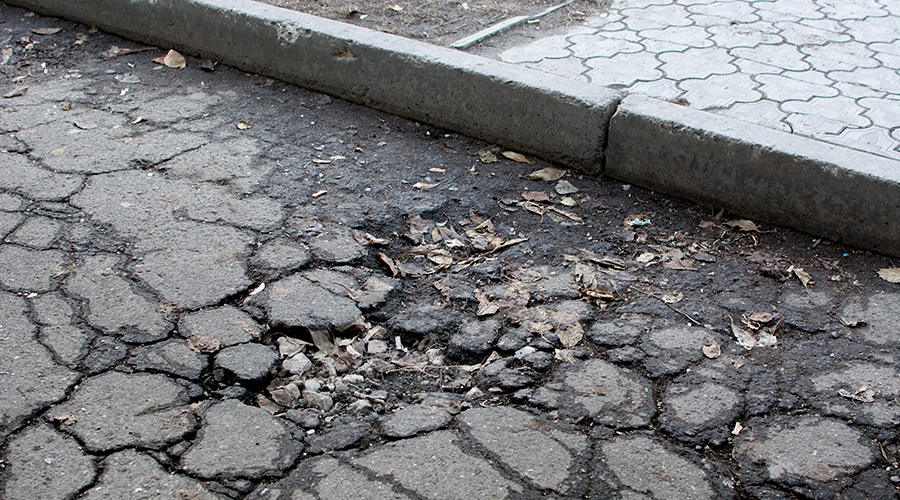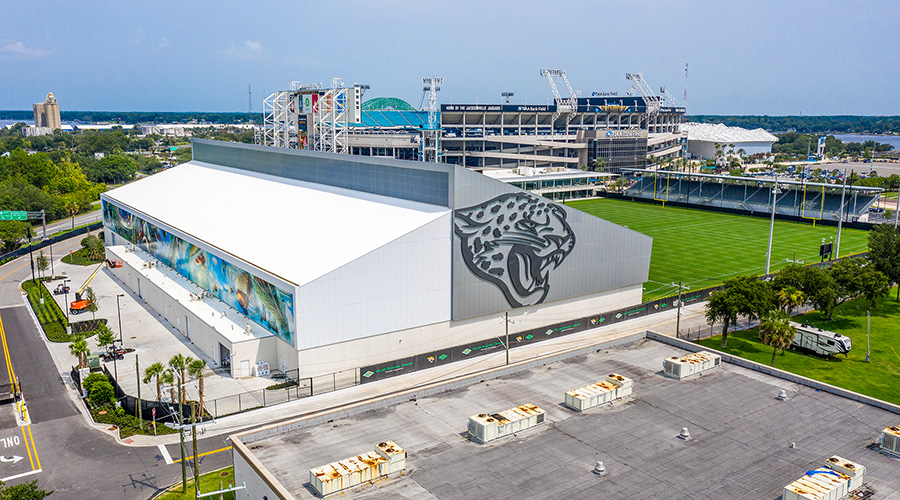
Cost-Effective Strategies for Paved Surface Maintenance
Keeping paved surfaces regularly inspected and maintained can help ward off unwanted costs. August 30, 2024
By Jeff Wardon, Jr., Assistant Editor
Paved surfaces act as a welcome mat to all facilities, so keeping them intact and in peak form is essential to making a good first impression. Plus, improperly maintaining paved surfaces can wind up giving facility managers costs they could have avoided. These issues and more will be covered in the NFMT Remix 2024 session “Cost-Effective Maintenance Strategies for Paved Surfaces,” presented by Troy Kaiser, senior consultant at Benchmark, and Elise Schmidt, vice president – operations at Benchmark. NFMT Remix 2024 will be held in Las Vegas from October 29 to 30.
FacilitiesNet: What are some effective strategies for prolonging the lifespan of paved surfaces?
Elise Schmidt: The most important thing in prolonging the life of an existing pavement is keeping the water from infiltrating the pavement system and weakening the soil and the substrate below. In addition to that, crack sealing of asphalt pavements and joint sealing of concrete pavements are some of the most cost-effective preventive maintenance measures or preventive maintenance items that can be done to extend the life of a pavement.
In addition to crack sealing and joint sealing, a secondary strategy for controlling water damage to a pavement is promoting a good or positive pavement surface drainage and maintaining the drainage structures by making sure that they are not blocked or damaged.
That seems like something so simple, but so often we run into issues where drainage structures are blocked and or damaged and then ultimately can impact the lifespan of a pavement.
Blocked or damaged structures can also cause water to find its way into the pavement and weaken the subbase, and the subgrade material, while ponding water or standing water on the pavement surface itself can increase the rate that the pavement deteriorates. Ponding surface water can also lead to safety hazards during the winter freezing, especially in the northern climates.
The last piece to this question is asphalt pavement. Surface treatments through liquid coating is a very common practice material and installation techniques can impact the overall cost and the longevity of installations as well.
When we talk about crack sealing of the asphalt pavements, one of the things that we really stand behind is doing the crack sealing the right way. That's making sure that you're routing the crack or that's a contractor is routing the crack prior to filling it in with the appropriate material.
Troy Kaiser: What that entails is they take a router bit and make the crack bigger, which sounds counterintuitive, but it creates a reservoir for more of the crack filler to sit in. So, as the asphalt expands and contracts, that rubber will expand and contract and stay attached to the sides of the crack. Whereas if you just drizzle it in, there's not enough material there so when the asphalt contracts, the sealer pulls away from one side of the crack. This defeats the purpose of crack selling it because it'll allow water to get underneath the pavement.
FacilitiesNet: How can optimal pavement performance be achieved and maintained overtime?
Schmidt: Obtaining optimal pavement performance over time begins with the original pavement construction and can basically be looked at as a three-pronged approach. The first prong is to have a proper pavement design that will support the planned traffic and overcome any subgrade deficiencies over the project life span. The second prong is inspection during construction that really assures that the project is being built for the plans and specifications. The third prong is to plan to perform regular preventive maintenance at the proper timing to protect and extend the life of the pavement.
FacilitiesNet: How can repair costs be proactively managed to avoid larger expenses in the future?
Schmidt: Pavement deterioration leads to failures, and if they're not maintained or repaired in a timely manner, almost always expect they will expand in size, scope and overall cost. Proactive and regular inspections that identify the pavement deficiencies and recommend repairs are the best way to reduce overall pavement costs.
When pavements are left to run to failure mode, the overall cost for that pavement during its life span is far more expensive than a pavement that is maintained and eventually overlaid. It's especially overlaid in the case of asphalt pavements to extend its serviceable life. The cost is even more when you take into account the liability exposure involved with having a pavement with uneven surfaces or potholes.
You can save on the overall cost of your pavements in the long run by proactively maintaining your pavements on essentially a three-to-five-year basis. Also, a lot of people don't even understand that where you want to spend your money first is on preventive maintenance measures. You don't really want to go spend your money on a pavement that needs to be reconstructed. Instead, you're better spending and investing your dollars in your newest pavements that need to be maintained.
Kaiser: It seems counterintuitive, but if you're always just putting out fires and rebuilding your worst pavements, that's just not the right strategy. Maintaining your best pavements first, then doing your overlays and then doing your reconstructions has been proven to improve the overall condition of your pavement assets and portfolio.
FacilitiesNet: What are the potential aesthetic consequences of neglecting pavement maintenance, especially for facilities with customer facing areas?
Schmidt: So, a retail parking lot really is considered to be the doormat for customer facing businesses. No matter how good a business is, people get their first impression of a business from the parking lot. If it is clean and maintained, it reflects positively on the business and just having a pavement with faded lines, rough surface, open cracks and or potholes is definitely unwelcoming and negative for the business.
Also, not maintaining a retail parking lot also increases the likelihood that potential customers will bypass the location in favor of the competition. This can also be a factor when trying to attract new employees as well, not just customers. These are some of the unseen overall costs of not maintaining your pavements.
To learn more about cost-effective maintenance strategies for paved surfaces, be sure to check out Kaiser and Schmidt’s session at NFMT Remix 2024 this October. Register for Remix here.
Jeff Wardon, Jr., is the assistant editor for the facilities market.
Next
Read next on FacilitiesNet












